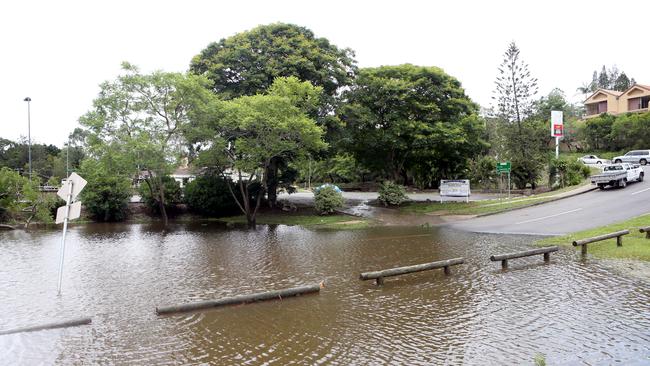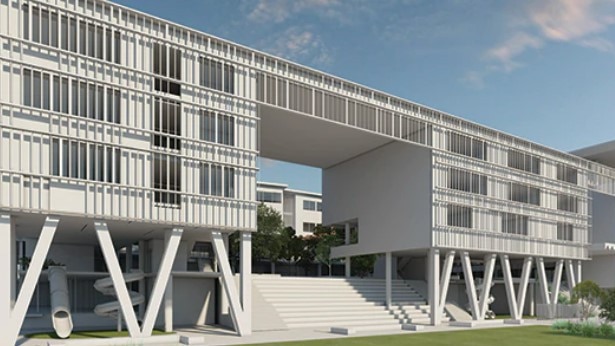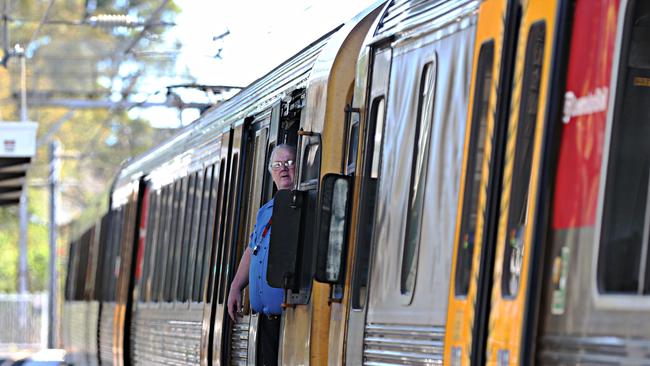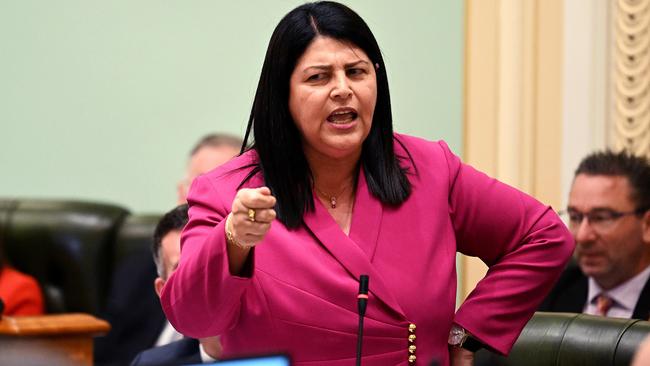MP says new westside primary school could be built over train station
It sounds kooky, but the inner-west’s first new primary school in 60 years could be built over a rail line, a westside MP says. With two sites now rejected, the hunt is on to find a third. Where do you think the school should go? TAKE OUR POLL
South West
Don't miss out on the headlines from South West. Followed categories will be added to My News.
The inner-west’s first new primary school in six decades should be built as close as possible to Taringa, even if it is on top of the train station, a local MP says.
Education Minister Grace Grace confirmed last week that her department was “reconsidering’’ siting the school at the old Toowong Bowls Club after a strong backlash from residents about flood risk, sewage overflows, traffic and a bat colony.
The Department’s first proposal, co-locating at Indooroopilly State High School (ISHS), also was withdrawn after howls of protest about worsening traffic from four existing nearby schools.
And a suggestion to convert the Queensland Academy for Science, Mathematics and Technology campus to a primary school sparked a massive petition.

Aged care developer TriCare announced on Tuesday (August 30) that it would soon start demolition for its latest project on Seven Oaks St in Taringa, ruling that out as a location.
Ms Grace defended the cost of the search for a site, which has now reached $2 million for expert reports.
And her department said any major public project required due diligence including: a detailed business case; flood modelling; geotechnical investigations; architectural drawings; traffic management studies; flora and fauna surveys; contamination report; environment impact assessments.
“The Government is awaiting a consultation report for consideration before any decisions are made on a new inner west primary school,’’ Ms Grace said.
“The money that has been invested over five years to determine the site for a new primary school for the inner west community has not been wasted.
“That investment will continue to inform Government going forward as to the best option for the inner west.
“I am extremely conscious of taking community feedback into account, and I’m advised that following the 2022 floods, the indication is that the inner west community is not supportive of a new school on the Toowong Bowls Club site.
“This is in contrast to feedback given in two rounds of extensive community consultation prior to the 2022 floods, where sentiment was in favour of this site opposed to other options.
“The Palaszczuk Government has a record of consulting communities and opening schools, while the LNP closed schools and sacked teachers.
“The LNP closed six schools, had a hit list of another 50 for closure, and planned to sell school ovals as part of their scheme off selling off Queensland’s assets.
“Meanwhile the Palaszczuk Government has opened 21 new schools.
“One of the schools the LNP closed was Fortitude Valley State School, adding to enrolment pressure in inner Brisbane – one of many LNP failures the Palaszczuk Government has been entrusted to fix by Queenslanders.’’
Ms Grace also pointed out that the Toowong school, if it went ahead, would be built above Q100 and Q500 flood levels and have “secure emergency access’’.
But Mr Berkman said neither the bowls club site, nor co-location with ISHS had the support of the community.
“I am frustrated that they’ve spent two years working towards two inappropriate sites and the proposed 2024 opening date will now be delayed,’’ he said.

“I’ve been crystal clear that we still need a new school in the near future.
“But getting this decision right is more important than just doing it quickly, so I’m using this as an opportunity to secure a better outcome.
Mr Berkman said he was focused on pushing for the primary campus to be built in Taringa, as close as possible to the old Taringa State School on Moggill Rd.
The Bligh Labor Government sold the school to developers more than two decades ago, citing very low enrolments as the reason.
Mr Berkman said the priority was finding a location close to public transport, especially trains.
He suggested during a meeting with Ms Grace last week that her department look at buying land around the train station, and build a school at the same time as upgrading access at the station.

This could include acquiring the commercial blocks north of the train line — Hungry Jack’s, the Sci-Fleet Toyota car yard and/or an Indian restaurant.
There might even be a possibility to build vertically, over the train line in that area.
For more land space, the Department could consider closing Pike Ave and buying some homes south of the train line, he said.
Those residents might be happy to sell, knowing there were years of major station upgrade construction works coming, although he acknowledged resuming homes was a big step.
“I’m pushing for a site near to where Taringa State School was before being sold off in 1997, where the three under-pressure catchments converge,’’ he said.
“That’s close to the train station and other public transport links.

“I’ve discussed a few options with the department, including a smaller school at the site of the proposed Tricare development, or next to the Taringa train station that could incorporate much-needed accessibility upgrades.
“Taringa Station is the only train station in the rail network that is only accessible by stairs, with no upgrade planned.
“It doesn’t meet federal disability standards despite being close to a hospital and other community facilities and being used by almost 50,000 people every month.
“Every time I’ve asked the Minister when upgrades will happen he tells me it’s not a priority, primarily due to ‘constructability issues’.

“There’s no doubt the station construction will be challenging, but it needs to happen, and combining that construction period with the delivery of the new school would make a lot of sense.
“Having the school right by Taringa Station would not only ease enrolment pressures at Ironside, ISS and Toowong SS, but it’d minimise traffic impacts by making it easier for parents to get their kids to school on public or active transport then continue on to work without needing to drive.”





